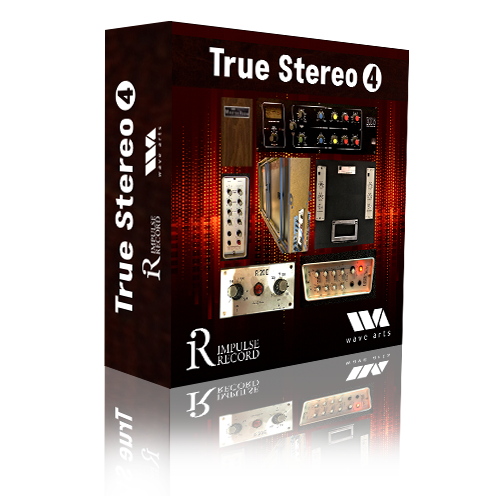
List Price $45.00
You Save $20.00
Your Price $25.00
This Library Contains: 54 IRs over 200 Megs and Includes
German 140 (True Stereo Simulation) 6 responses, 25M German 240 5 responses, 18M Austrian BX5 6 responses, 25M
Austrian BX10 16 responses, 58M
Austrian BX15 6 responses, 32M
Austrian BX20 10 responses, 43M
MRoom Spring 5 responses, 10M
Total: 54 responses, 210M
The True Stereo 4 library contains samples of some iconic springs, German 140 simulated and a German 240. As with our traditional library content, all of these vintage reverb files, are all recorded at 24-bits, 96 kHz.
These preset names are derived from the original unit presets and lengths. Like our stereo Convology XT library, Impulse Record worked with studios from around the world and partnered with those studios with a track record of quality, with understanding and knowledge of not only convolution reverb, but knowledge that we could use to incorporate within a first class True Stereo Library. As with our traditional Convology XT libraries, most of these units sampled have been used with many legendary artists.
While some go to extreme and in some cases obscene file sizes and sampling rates, only to bog down end user resources and RAM, we have maintained the ratio between undeniable quality and incredible efficiency. That’s not easy to do with True Stereo as the files are really double in size.
As Convology XT continues to grow, one of the areas we have been focusing on has been True Stereo. In large part, this is because of a large and ever increasing user base that has been asking for it – and for good reason. It’s an amazing library! The True Stereo files captured in this library are more than stunning, they’re some of the best, if not the best, you’ll ever work with!
German 140 – The German 140 was always a mono in and stereo out box, but we’ve “imagined” what a True Stereo German 140 would sound like in True Stereo. Using the magic of the digital domain, we have introduced one of the most iconic plates and manufacturers, in our True Stereo catalogue. True to it’s well established sound, this True Stereo German 140 will fill that void in that convolution space.
German 240 – The German 240 was the next step and evolution from their original 140 plate that was very large in size. In comparison, the 240 was 24″ X 24″ The magic of the 240 was in the Reverb Foil which used an electroplated gold foil of great purity (24 carat “coin gold”) with a thickness similar to aluminum foil. Even with the advances of size, the German 240 was still very costly at the time and generally had a darker sound.
MRoom Spring – long spring reverb, designed and sounding similar to the long British Spring. This spring was in a class reminiscent to the Australian BX series, many saying it fell short and others holding on to their vintage unit because they love the sound so much. Either way, it offers a unique spring sound, that can be applied in productions that warrant that “certain” vintage spring sound.
BX5 – “Torsional Transmission Line” spring reverb. Three selectable reverb decay settings – “A” smoother reminiscent somewhat of a plate reverb sound for a spring; “B” longer decay more “boingy-ness” and “C” – longest decay and most “boing.” A very bright sounding spring.
BX10 – was billed as “the ultimate “natural sound” portable reverberation unit. Frequency range 20 – 12000Hz. Frequency response 20 – 8000Hz. Three different reverb times 1.5 second, 2.5 second and 3.5 second.
BX15 – The BX-15 was designed for use in smaller studios. Two mechanically and also electrically separate, isolated channels, made it possible to handle two independent signal sources with different decay times (1.5 – 3.5 seconds). This unit like the others had treble and bass settings, along with reverb intensity.
BX20 – The AKG BX20 reverberation unit was produced in the late 1960s, and is perhaps the most popular spring reverb units made for good reason. They are longer springs and warmer. Truly one of the closest springs that emulates a plate. This unit gives depth and warmth that many DSPs have a harder time emulating.
